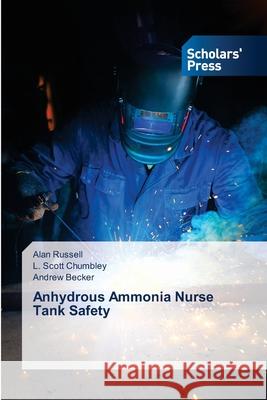Anhydrous Ammonia Nurse Tank Safety » książka
Anhydrous Ammonia Nurse Tank Safety
ISBN-13: 9783639718485 / Angielski / Miękka / 2014 / 284 str.
Anhydrous ammonia is one of the most widely used and most dangerous agricultural chemicals. It is transported to farm fields in nurse tanks: steel pressure vessels towed behind tractors or trucks. Nurse tank failures have caused fatalities, injuries, and property damage. This document describes several problems commonly associated with nurse tanks that can lead to failure, including: stress corrosion cracking, residual stress in unannealed welds, improper welding methods, and metal fatigue. Special emphasis is placed on neutron diffraction measurements of residual stresses in and near welds; a side-angle ultrasound survey of a large population of used nurse tanks to determine the number, orientation, and size of cracks; analysis of welding flaws leading to pinhole failures; stress corrosion crack growth rate experiments; and tank lifetime estimation based on growth of existing stress corrosion cracks in nurse tanks.
Anhydrous ammonia is one of the most widely used and most dangerous agricultural chemicals. It is transported to farm fields in nurse tanks: steel pressure vessels towed behind tractors or trucks. Nurse tank failures have caused fatalities, injuries, and property damage. This document describes several problems commonly associated with nurse tanks that can lead to failure, including: stress corrosion cracking, residual stress in unannealed welds, improper welding methods, and metal fatigue. Special emphasis is placed on neutron diffraction measurements of residual stresses in and near welds; a side-angle ultrasound survey of a large population of used nurse tanks to determine the number, orientation, and size of cracks; analysis of welding flaws leading to pinhole failures; stress corrosion crack growth rate experiments; and tank lifetime estimation based on growth of existing stress corrosion cracks in nurse tanks.











